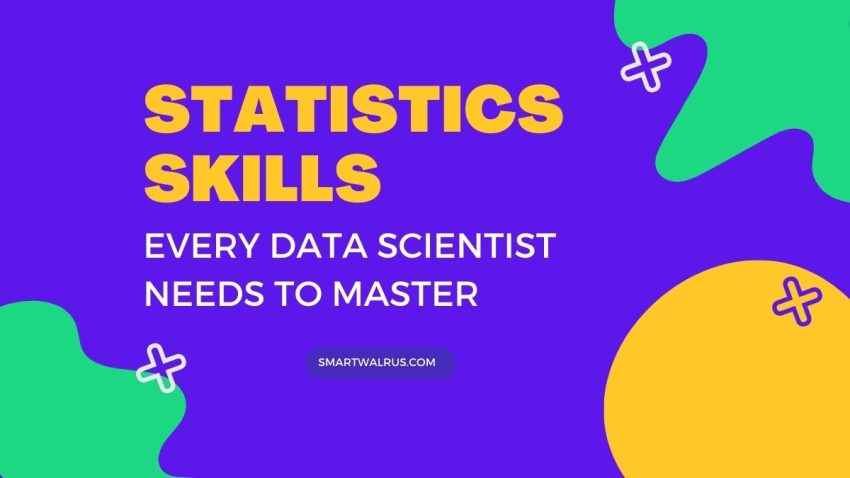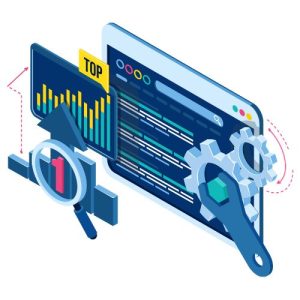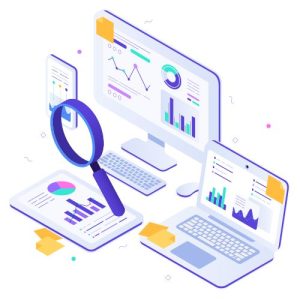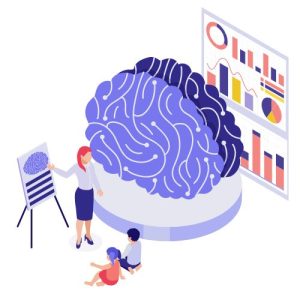The Statistics Skills Every Data Scientist Needs to Master

What statistics skills do you need as a data scientist?
Statistics is the backbone of data science and is essential for any aspiring data scientist to master. With a thorough understanding of the fundamentals, data scientists can dig deeper into the data, draw meaningful conclusions, and make informed decisions.
Statistics skills are the key to unlocking the potential of data-driven insights and provide the foundation for a successful data scientist. In this article, we’ll explore the essential statistics skills you’ll need to learn as a data scientist.
What is data science?

The goal of data science is to find meaningful insights that can be applied to real-world problems. These insights can then be applied to various industries to make smarter decisions.
Data scientists are experts at collecting, cleaning, analyzing, and visualizing data. They use advanced techniques such as machine learning and artificial intelligence to make sense of data.
While data science is the process of extracting insights from data and applying them to real-world problems, statistical analysis is a key part of data science and enables data scientists to make sense of the data they collect
Why are statistics skills important for data scientists?
With the right skills, a thorough understanding of statistics can also help data scientists interpret their findings. Statistics can help businesses make smarter decisions and communicate their analysis with clarity to stakeholders.
But the quality of the data determines the quality of the insights. If the data is flawed, it can lead to misleading insights and incorrect conclusions, which can lead to incorrect decisions and harm the business or organization.
Overall, statistics skills are important for data scientists to ensure their data is reliable and trusted. But using statistics, data scientists can also assess the quality of the data and determine if it is reliable and trustworthy.
Statistical analysis can answer any of the five key questions:
1. Descriptive statistics
Descriptive statistics help data scientists describe their data. It involves exploring the data to uncover the key characteristics and patterns. For example, this can include the mean, standard deviation, minimum and maximum values.
Here are some of the typical descriptive statistics:
2. Inferential statistics
Although descriptive statistics help data scientists describe their data, they do not shed light on causal relationships. In order to do this, they must use inferential statistics.
Inferential statistics enables data scientists to make predictions and draw conclusions about their data. Here are the common types of inferential statistics that data scientists use to analyze data:
3. Hypothesis testing

A hypothesis test is a statistical procedure used to determine if there is enough evidence in a given dataset to reject the null hypothesis. It is a process of testing an assumption about a population parameter and is used to make decisions based on the outcome of the test.
The null hypothesis is typically stated as “there is no difference” or “no change” between the two groups being compared and the alternative hypothesis is the opposite of the null hypothesis.
To conduct a hypothesis test, a researcher first formulates a specific hypothesis, collects data, and then uses a variety of techniques to analyze the data and draw a conclusion regarding the hypothesis. The conclusion is usually presented in terms of the likelihood that the null hypothesis is true or false.
4. Exploratory data analysis
Exploratory data analysis is an essential part of the data science process where data scientists explore their data to uncover patterns and connections. This process allows data scientists to understand their data and identify any issues or inconsistencies that may exist.
It is important that data scientists conduct an exploratory data analysis before they start generating any insights or modeling their data as it enables them to identify and fix any issues with their data. There are three main types of exploratory data analysis: visualizations, summary statistics, and conditional analysis.
5. Predictive analytics

Predictive analytics enables data scientists to make predictions about future outcomes based on historical data. It uses a variety of statistical methods, such as machine learning, to create models that are capable of making predictions, such as which consumers are likely to default on a loan.
Data scientists use predictive analytics in a variety of industries, including finance, retail, and healthcare. This can help make smarter decisions based on past and current data. There are two types of predictive analytics:
- Descriptive analytics – Descriptive analytics uses existing data to generate reports and summaries. It focuses on the “what happened” aspect of data analysis, examining historical data to identify patterns and trends.
- Predictive analytics – While descriptive analytics looks back in time, predictive analytics looks forward in time and uses various techniques (such as regression analysis and machine learning) to create predictive models.
Practice resources for mastering statistics skills
There are many real-world datasets that data scientists can practice working with to hone their skills.
Any of these places are great practice resources for mastering your statistics skills.
Statistics skills for data scientists
The data science role is a broad and ever-evolving field that requires a variety of skills to master. Statistical analysis is an essential part of data science and enables data scientists to make sense of their data.
Descriptive statistics, inferential statistics, and exploratory data analysis are all important parts of the process. Predictive analytics and descriptive analytics are used to make predictions about future outcomes.
As technology advances and the complexity of data analysis increases, data scientists need to stay up to date with the skills required to stay ahead of the curve.
Here’s a table that summarizes everything that you’ve learned in this article.
| Concept | Description | Focus and Purpose |
|---|---|---|
| Descriptive Statistics | Summarizes and describes data using measures like mean, median, mode, etc. | Provides insights into data characteristics without drawing conclusions. |
| Inferential Statistics | Draws conclusions about a population based on a sample of data. | Uses sample data to make inferences about a larger population. |
| Hypothesis Testing | Evaluates a claim or hypothesis about a population parameter. | Determines if there’s enough evidence to support or reject a hypothesis. |
| Exploratory Data Analysis | Examines data to discover patterns, trends, and relationships. | Identifies potential insights and generates hypotheses for further analysis. |
| Predictive Analytics | Uses historical data to make predictions about future events. | Builds models to forecast outcomes and make informed decisions. |

Related Data Analysis
How Data Science Can Help Nonprofit Organizations
How To Become A Data Analytics Manager
What’s the Difference Between a Data Analyst and a Data Scientist?
A Day in the Life of a Data Scientist: The Daily Routine
5 Steps To Developing A Health Informatics Career
25 Essential Data Science Tools
7 Data Science Specializations You Should Pursue If You Want to Get Ahead
The Statistics Skills Every Data Scientist Needs to Master